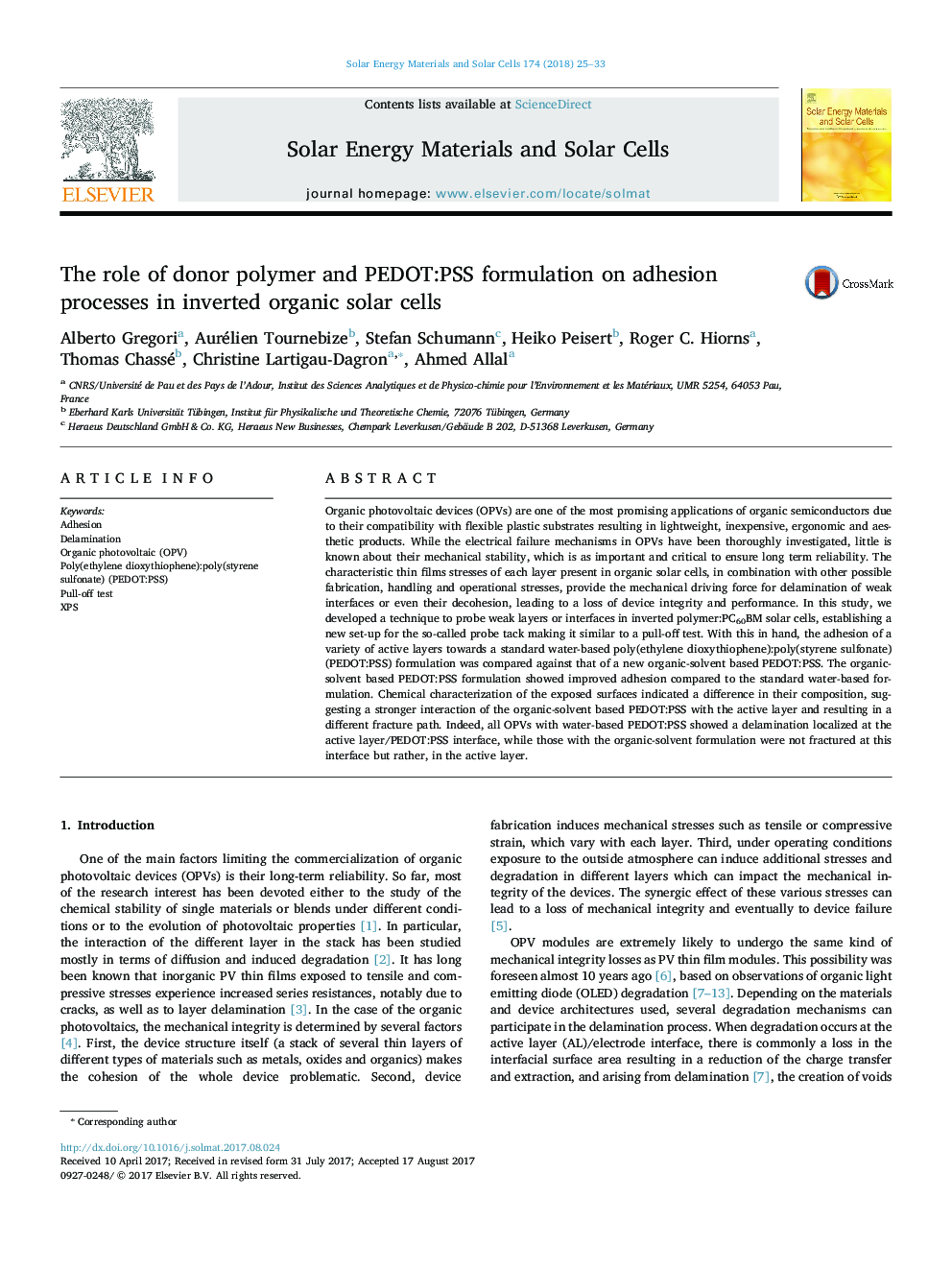| Article ID | Journal | Published Year | Pages | File Type |
|---|---|---|---|---|
| 6456623 | Solar Energy Materials and Solar Cells | 2018 | 9 Pages |
â¢Pull-off technique to easily characterize the mechanical integrity of OPV devices.â¢The localization of delamination is depending on the formulation of PEDOT:PSS used.â¢Three different active layers were also examined.
Organic photovoltaic devices (OPVs) are one of the most promising applications of organic semiconductors due to their compatibility with flexible plastic substrates resulting in lightweight, inexpensive, ergonomic and aesthetic products. While the electrical failure mechanisms in OPVs have been thoroughly investigated, little is known about their mechanical stability, which is as important and critical to ensure long term reliability. The characteristic thin films stresses of each layer present in organic solar cells, in combination with other possible fabrication, handling and operational stresses, provide the mechanical driving force for delamination of weak interfaces or even their decohesion, leading to a loss of device integrity and performance. In this study, we developed a technique to probe weak layers or interfaces in inverted polymer:PC60BM solar cells, establishing a new set-up for the so-called probe tack making it similar to a pull-off test. With this in hand, the adhesion of a variety of active layers towards a standard water-based poly(ethylene dioxythiophene):poly(styrene sulfonate) (PEDOT:PSS) formulation was compared against that of a new organic-solvent based PEDOT:PSS. The organic-solvent based PEDOT:PSS formulation showed improved adhesion compared to the standard water-based formulation. Chemical characterization of the exposed surfaces indicated a difference in their composition, suggesting a stronger interaction of the organic-solvent based PEDOT:PSS with the active layer and resulting in a different fracture path. Indeed, all OPVs with water-based PEDOT:PSS showed a delamination localized at the active layer/PEDOT:PSS interface, while those with the organic-solvent formulation were not fractured at this interface but rather, in the active layer.
